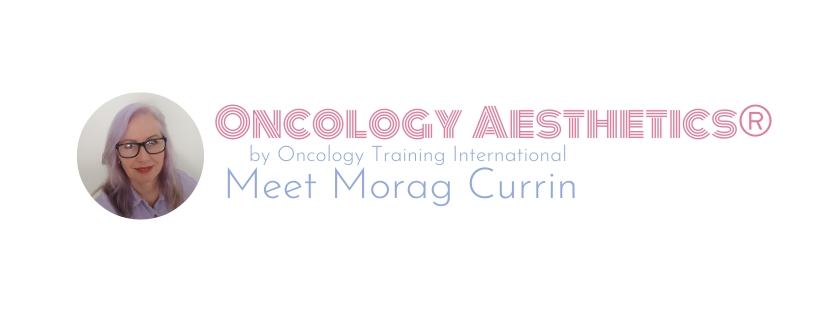Tamoxifen – Associated Skin Dryness
By Morag Currin
Tamoxifen aka Nolvadex, Soltamox is a selective estrogen receptor modulator (SERM) used to treat all stages of hormone-receptor-positive breast cancer in women and men.
The use of Tamoxifen or other hormone therapy drugs to treat cancer is based on the observation that receptors for specific hormones that are needed for cell growth are on the surface of some tumor cells.
Hormone therapy drugs can work by:
- stopping the production of a certain hormone,
- blocking hormone receptors, or
- substituting chemically similar agents for the active hormone, which cannot be used by the tumor cell.
Tamoxifen is an antiestrogen. Antiestrogens bind to estrogen receptor site on cancer cells thus blocking estrogen from going into the cancer cell. This interferes with cell growth and eventually leads to cell death. An alternative anti-estrogen drug is Toremifene.
The Importance of Estrogen for the Skin
Estrogen appears to aid in the prevention of skin aging in several ways. This reproductive hormone helps prevents a decrease in skin collagen in postmenopausal women; and topical and systemic estrogen therapy can increase the skin collagen content and therefore maintain skin thickness.
In addition, estrogen maintains skin moisture by increasing acid mucopolysaccharides and hyaluronic acid in the skin and possibly maintaining stratum corneum barrier function. Sebum levels are higher in postmenopausal women receiving hormone replacement therapy.
Skin wrinkling also may benefit from the use of estrogen when hormone therapy drugs affect the elastic fibers and collagen. It has been suggested that estrogen also increases cutaneous wound healing by regulating the levels of a cytokine. In fact, topical estrogen has been found to accelerate and improve wound healing in elderly men and women. The role of estrogen in scarring is unclear but recent studies indicate that the lack of estrogen or the addition of tamoxifen may improve the quality of scarring. Unlike skin aging, the role of endogenous and exogenous estrogen in melanoma has not been well established. If a person would like to use topical estrogen on the skin, we recommend this is discuss this with a naturopathic oncologist. Another option for an estrogen-deficient skin without the systemic effects of estrogen is called MEP, or Methyl Estradiolpropanoate.
Often the dry skin condition will continue while a person continues to take hormone therapy drugs for cancer. The skin can improve once treatment is no longer required.
Read More Oncology Aesthetics®
Morag Currin is a monthly featured guest blogger. She has an entire library of content on Oncology Aesthetics® here at Lipgloss + Aftershave.
Watch Webisode of L+A Now “Preview of Oncology Aesthetics®”

Watch The Episode On The L+A App!
Download on the App Store or Google Play
Skin Cleansing
Lukewarm water is recommended when bathing or showering. Besides saving on water, Limit your bath limit time to 10 minutes or less. Pat the skin dry gently after a bath or shower skin leaving some water on the skin and immediately apply your moisturizer. Rubbing the skin vigorously with a rough towel can make it more irritated.
Soaps, body washes, and cleansers have functional ingredients whose main function is to cleanse the skin. These functional ingredients also remove lipids in the skin, and these lipids are essential especially when the skin is dry, so try to avoid using these mentioned products, or use them sparingly. When these cleansers are removed from the skin, then immediately replenish the skin lipids by using a moisturizer or balm.
Sometimes the pH of cleansers can be too alkaline and an alkaline pH is drying to the skin. Remember, a healthy skin pH ranges around 4.5-5.5.
Skin Moisturizers
Apply a rich moisturizer, even better a balm several times a day, especially right after a bath or shower, or just constantly washing the hands. It is ideal to apply the moisturizer or balm while the skin is still damp from a bath or shower. A rich moisturizer with lactic acid can remove excess flaky skin cells, plus moisturize the skin simultaneously.
Apply sunblock with an SPF of 15 or higher to all sun-exposed areas, and/or cover-up vulnerable areas.
Humidifiers
These items are very helpful if you live in a cold climate where you run your furnace the hot, dry indoor air can dry out the skin and make itching and flakiness worse.
Irritants
Synthetic fragrance can be very irritating to a dry, sensitive skin, so avoid products which include fragrance or parfum on the label. Many people really love to smell awesome after a bath or shower, or when apply body products to the skin – but for the skin’s safety and protection, avoid fragranced products.
REFERENCES
https://www.dermatologytimes.com/view/solution-estrogen-deficient-skin
https://www.ncbi.nlm.nih.gov/pmc/articles/PMC2685269/
